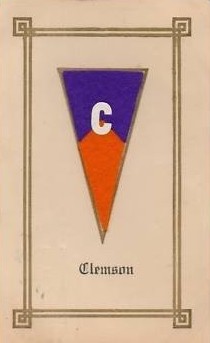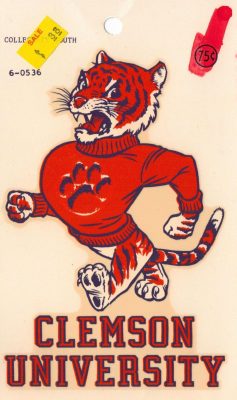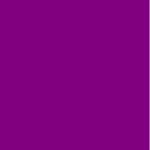Clemson University
South Carolina
1889
Formerly “Clemson Agricultural College of South Carolina”





Citations in the World Almanac (listed by cover date; color information is from the previous year): garnet/navy blue (1897); orange/blue (1900); purple/gold (1902); purple/orange (1904-1931); old gold/purple (1934-1935)
Descriptions of Clemson University’s academic hood lining colors vary, reflecting the university’s inconsistent use of “orange” and “gold” to describe its second collegiate color.
Academic hood lists published by the Intercollegiate Bureau of Academic Costume (IBAC) in 1927, 1948, and 1972 described Clemson as having a hood lined purple with a gold chevron. Using the official Clemson color terminology and darker shades from the 1950s, a list compiled by Kevin Sheard in Academic Heraldry in America (1962) described the university’s hood lining as Northwestern purple with a burnt orange chevron. Apparently trying to please everyone, a 1969 IBAC list described the shade of Clemson’s chevron as gold orange, on a purple lining. The Bureau reverted back to their original purple and gold description of Clemson’s hood in their 1972 list.
Here the university’s correct shades of purple and orange have been used with the original heraldic pattern assigned by the Intercollegiate Bureau of Academic Costume prior to 1927.


The history of Clemson’s school colors is rather convoluted. The first Clemson Agricultural College senior class chose garnet and navy blue as their college colors in 1896; ribbons in these colors were used to tie the diplomas the college conferred that year.
Because garnet and navy blue were easily confused with the garnet and black of the University of South Carolina, Dr. Walter Riggs, an electrical engineering professor who also coached the first Clemson football team, decided to change the colors to gold and purple in 1899. Riggs had graduated from the Agricultural and Mechanical College of Alabama (Auburn), so he modified the orange and navy blue colors of Auburn to orange and purple for Clemson. But because orange and gold were often synonymous descriptions of the same color, Clemson also sometimes described its colors as purple and gold.
Unfortunately, when orange (or gold) and purple were used for athletic uniforms, the colors tended to unacceptably fade to cream and lilac when repeatedly washed. So in the early 1930s, a Clemson football coach named Jess Neely darkened the uniform colors to deep purple and old gold, which would allow the team to wear the uniforms for the entire athletic season as the colors mellowed to the “true” purple and orange of Clemson. By the 1950s these athletic color shades had set the standard for the entire university, which officially defined its colors as “Northwestern purple” and “burnt orange”. These are deeper shades of purple and orange – Northwestern defines its purple as “royal purple”, which is a dark purple, and burnt orange is a dark orange. Today the university has lightened its palate and has returned to the purple and orange colors it used during the first half of the 20th century.
